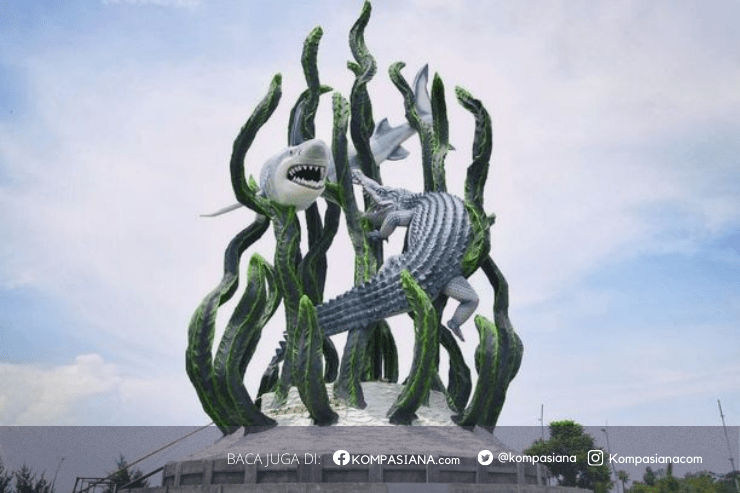Search for Victims of KMP Tunu Pratama Jaya Ferry Sinking
Maritime accidents, particularly ferry sinkings, represent a significant challenge to maritime safety and emergency response systems globally, necessitating comprehensive search and rescue operations to locate victims and mitigate the impact of such disasters. The sinking of the KMP Tunu Pratama Jaya ferry in the Bali Strait underscores the critical importance of efficient and coordinated search and rescue efforts in the aftermath of maritime incidents. These efforts are essential not only for the immediate recovery of victims but also for providing closure to families and informing future preventative measures. The imperative to prioritize safety and security in maritime transportation is highlighted by the frequency of accidents involving drowning, burning, and missing persons (Irwan, 2020; Mia et al., 2021). Examining maritime accidents is crucial due to the substantial dangers arising from increasing ship tonnage and traffic, as these incidents can lead to severe economic, environmental, and human losses (elik & ebi, 2008). Analyzing accidents helps to pinpoint the causes and suggest preventive actions, thus enhancing maritime safety and averting future grounding accidents (Akyz, 2015).
When a maritime accident occurs, the primary objective is to swiftly locate and recover any survivors, which is a race against time due to factors like hypothermia and the availability of breathable air for those trapped within the vessel. The effectiveness of search and rescue operations is highly dependent on several factors, including the timeliness of the response, the availability of resources, weather conditions, and the accuracy of information regarding the vessel's last known location and passenger manifest. Search and rescue operations are often integrated into the routine duties of maritime safety administrations, highlighting the importance of readiness and the capacity to respond effectively to emergencies at sea (Ma & Guobo, 2020). The maritime industry, despite its foundational role in international trade and economy, is vulnerable to a range of challenges that can compromise safety. These vulnerabilities highlight the necessity for continuous improvement in safety protocols and resilience to future challenges within the maritime sector (Maternov et al., 2023).
Maritime transportation is indispensable for global commerce, moving goods and raw materials across the oceans, with approximately 90% of global trade relying on sea transport, thus underscoring its importance in international commerce (Durlik et al., 2024). The rise in international trade has elevated the shipping industry's economic significance for coastal nations, although this expansion has brought an increase in the number of ships and the size of vessels. It's crucial for the shipping sector to create safety management systems that adhere to regulations and are customized for ships, aiming to decrease operational risks and remove accident-causing personal factors, so enhancing business performance (Chen et al., 2018; Rong et al., 2019). While advancements in ship design, technology, and regulations have contributed to a decrease in reported shipping losses over the past decade, the potential for catastrophic events remains a significant concern (Dominguez et al., 2021). Maritime accidents, influenced by human, technological, and environmental factors, can lead to substantial environmental and economic repercussions (Dominguez et al., 2021). Addressing these challenges requires a multifaceted approach, including improvements in training, safety management systems, and the implementation of advanced technologies to enhance situational awareness and decision-making. The inherent dangers of maritime operations, compounded by factors such as fatigue, stress, work pressure, communication barriers, environmental conditions, and extended periods away from home, contribute to the maritime industry being considered a high-risk sector (Hetherington et al., 2006). Furthermore, human factors such as fatigue, stress, and communication barriers can significantly impact maritime safety (Hetherington et al., 2006; Kim & Gausdal, 2020). Given the maritime sector's complexity and international nature, it is also vulnerable to security threats, including terrorist attacks, due to its extensive international network and multiple legal frameworks (Ng & Vaggelas, 2012). Technological advancements, including sensor technology, IT, automation, and robotics, are rapidly transforming the maritime industry, offering opportunities to improve safety, efficiency, and environmental performance, requiring the sector to adapt to regulatory changes and market pressures.
References
Akyz, E. (2015). A hybrid accident analysis method to assess potential navigational contingencies: The case of ship grounding. Safety Science, 79, 268. https://doi.org/10.1016/j.ssci.2015.06.019
elik, M., & ebi, S. (2008). Analytical HFACS for investigating human errors in shipping accidents. Accident Analysis & Prevention, 41(1), 66. https://doi.org/10.1016/j.aap.2008.09.004
Chen, C.-T., Chiang, Z., Liu, Y., & Zeng, X. (2018). Critical Success Factors in Marine Safety Management in Shipping Industry. Journal of Coastal Research, 83, 846. https://doi.org/10.2112/si83-139.1
Dominguez, C., Lakshmi, V. V., Duffour, V., Eydieux, J., & Rana, T. (2021). Risk and safety in maritime transport: A review and agenda for research [Review of Risk and safety in maritime transport: A review and agenda for research]. https://hal.science/hal-04809694
Dominguez, C., Vuddaraju, L. N. R., Corbett-Etchevers, I., & Tassabehji, R. (2021). Reducing maritime accidents in ships by tackling human error: a bibliometric review and research agenda [Review of Reducing maritime accidents in ships by tackling human error: a bibliometric review and research agenda]. Journal of Shipping and Trade, 6(1). Springer Nature. https://doi.org/10.1186/s41072-021-00098-y
Durlik, I., Miller, T., Kostecka, E., & Tuski, T. (2024). Artificial Intelligence in Maritime Transportation: A Comprehensive Review of Safety and Risk Management Applications [Review of Artificial Intelligence in Maritime Transportation: A Comprehensive Review of Safety and Risk Management Applications]. Applied Sciences, 14(18), 8420. Multidisciplinary Digital Publishing Institute. https://doi.org/10.3390/app14188420







